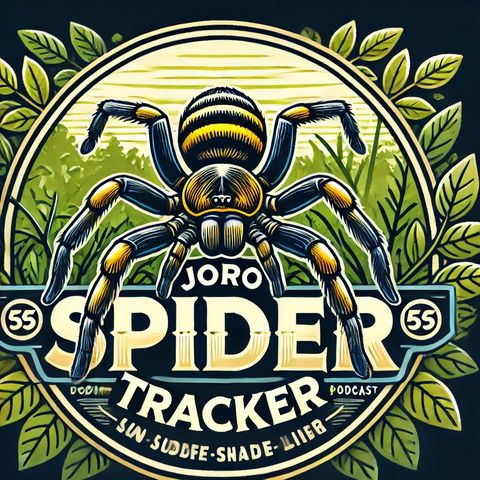Captivating Joro Spiders Invade the Southeastern U.S., Raising Ecological Concerns

Regístrate gratis
Escucha este episodio y muchos más. ¡Disfruta de los mejores podcasts en Spreaker!
Descarga y escucha en cualquier lugar
Descarga tus episodios favoritos y disfrútalos, ¡dondequiera que estés! Regístrate o inicia sesión ahora para acceder a la escucha sin conexión.
Descripción
The Joro spider, scientifically known as Trichonephila clavata, is an eye-catching species originally from East Asia, particularly Japan, China, Korea, and Taiwan. It made headlines as it began to spread...
mostra másDistinct from most common domestic spiders in several ways, Joro spiders are considerably larger, with females capable of growing up to three inches when their legs are fully extended. Their bodies are brightly colored, featuring a mix of yellow, blue, and red hues. What really sets these spiders apart is their web—a shimmering golden silk that is not only beautiful but also unusually strong. This characteristic golden silk, combined with their size, makes their presence quite noticeable in affected areas.
Joro spiders are termed "invasive" due to their non-native status and the rapid expansion of their population in new environments, in this case, the southeastern U.S. Their ability to thrive in a variety of climates and habitats contributes to their invasive potential. Concerns arise regarding how they might impact local ecosystems. While they primarily feed on insects, including some pests, and are relatively harmless to humans, the ecological balance could still be disrupted by their proliferation. Predation, competition with native species, and changes in the structure of local food webs are potential ecological consequences.
One fascinating aspect of Joro spiders' spread is their method of movement, which involves a behavior known as 'ballooning.' Young spiders can let out silk strands to catch the wind, carrying them great distances. This ability not only facilitates rapid spread over large geographic areas but also adds an unpredictable element to their migration patterns. Researchers are studying these patterns to predict how climate change could affect their spread, as warmer temperatures could potentially aid their expansion further north into regions like Canada.
Considering the invasive potential and the rapid spread of the Joro spider, it's crucial for researchers and environmentalists to monitor their movements closely. Understanding their ecological impact, and finding ways to manage their population in non-native areas, while respecting the native biodiversity, is essential. As the Joro spider continues to weave its way through different landscapes, the responses from various human communities also vary, from curiosity and fascination to concern and caution.
Información
| Autor | QP-4 |
| Página web | - |
| Etiquetas |
Copyright 2024 - Spreaker Inc. an iHeartMedia Company
